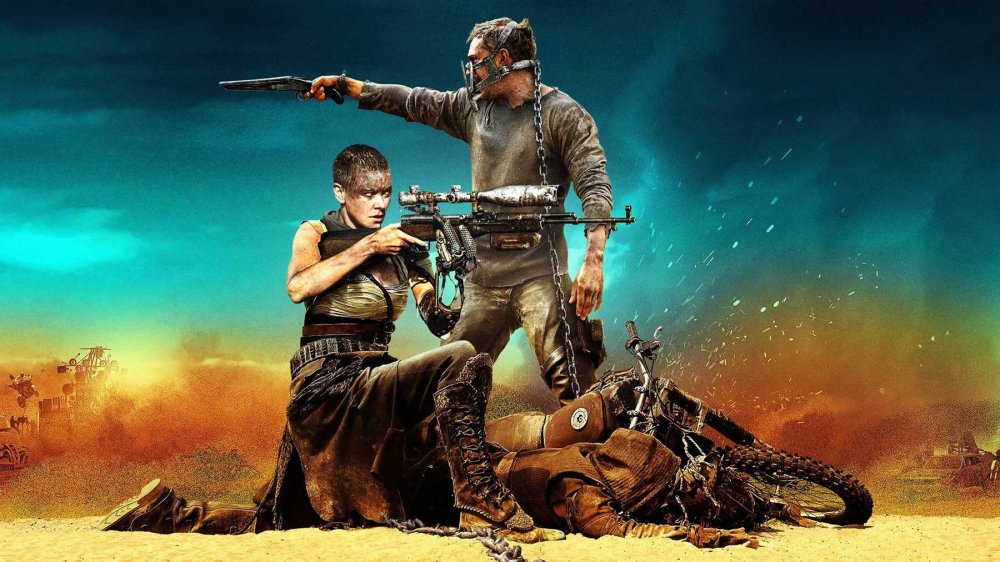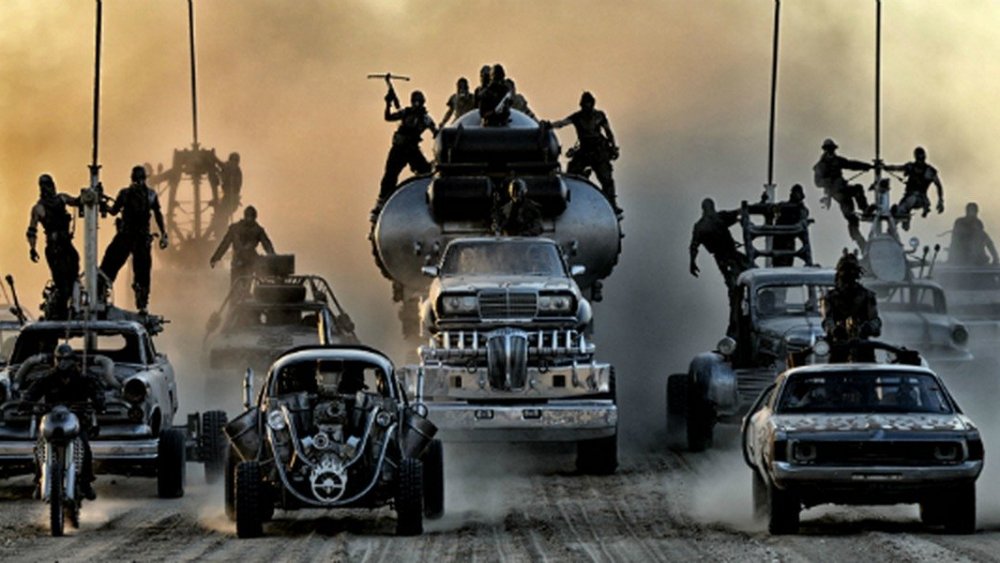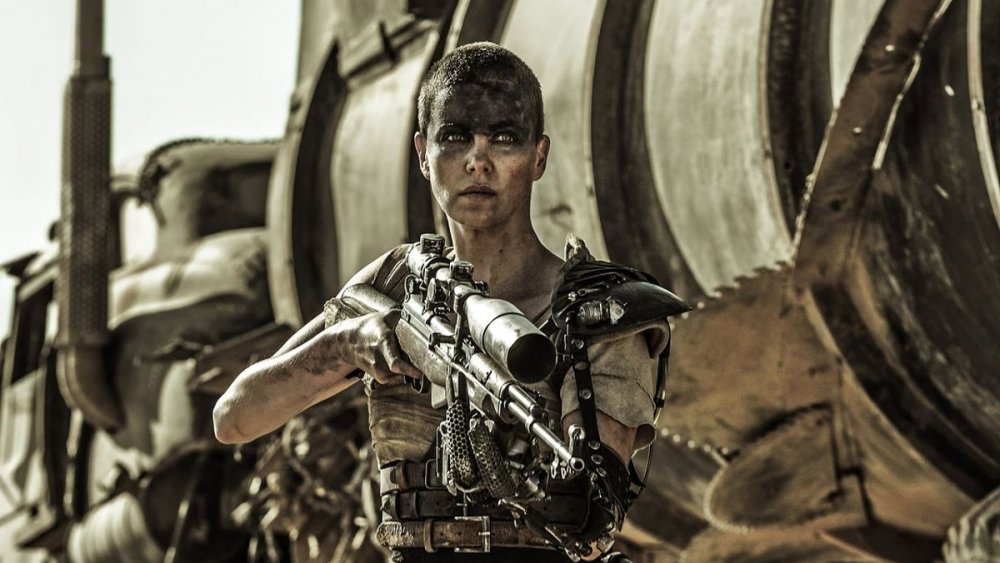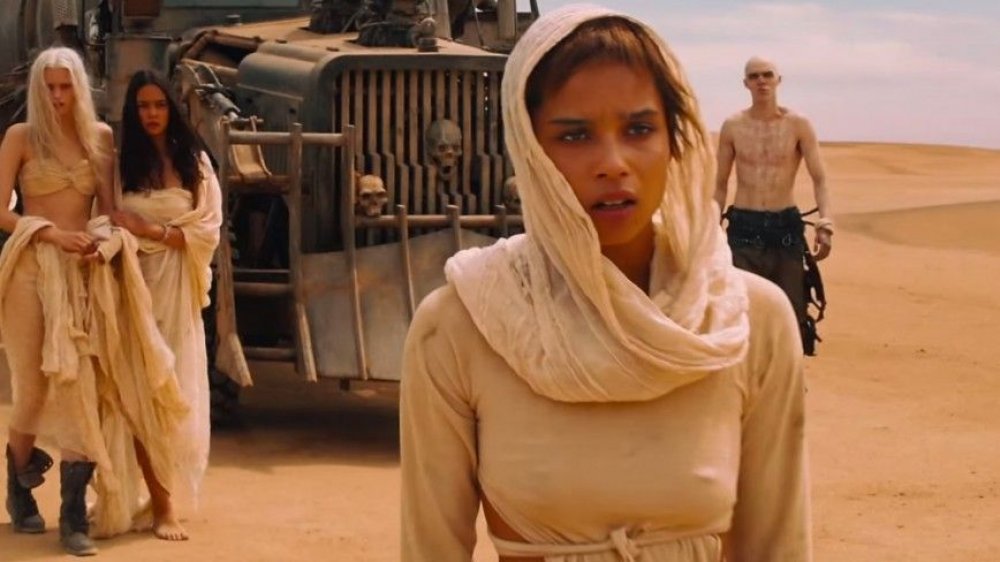The Reason Mad Max: Fury Road's Opening Scene Nearly Wasn't Shot
Twenty years after the release of Mad Max: Beyond Thunderdome, George Miller returned to his post-apocalyptic universe with Mad Max: Fury Road, starring Charlize Theron and Tom Hardy. Though the previous trilogy of films were celebrated as more of a cult-status series, Fury Road's incredible stunts, unique story, and auteur narrative style took the critical world by storm, also collecting nearly $400 million at the box office and ten Oscar nominations. It's an extraordinary film for the action genre — where action movies are usually defined by easy-to-digest popcorn fun, Fury Road is objectively difficult to watch for its brutality, widely varying pace, and extensive sequences with almost no dialogue despite as many as eight actors appearing on-screen at once.
The New York Times has published an oral history of Fury Road for its fifth anniversary of release, collating snippets from its cast and crew's experiences. Production on this film, start to finish, took over a decade, and suffered multiple struggles all across the filmmaking process. Normally, when a film experiences as many setbacks as Fury Road did, it ends in a special kind of disaster — a victim of uneven or confused story beats or poor reshoots. Sometimes, it will even just up and die mid-production, never to see the light of day. In fact, the opening and closing scenes of the movie — both of which are critical to establishing and resolving the stakes of the story — were almost not shot at all. Here's why those important scenes almost didn't make it into Fury Road.
Incredible challenges for Mad Max: Fury Road
Production of Fury Road was completely shut down three times, the first being after 9/11, just before they were to begin filming with Mel Gibson still in the lead role. Costs of transporting and insuring the necessary equipment soared in the wake of the terrorist attack due to global air travel restrictions that were imposed in the immediate aftermath. Logistics became too complicated as the world reviewed security protocols, and the whole project had to be abandoned.
The second near-shutdown occurred in 2010, with production once again all ready to go and the freshly-cast Tom Hardy replacing Mel Gibson in the role of Max. This time, the plan was to film in Miller's native Australia, only for things to be stymied by once-in-a-century flooding rains in what was normally a desert plain, creating a super bloom of grasses and wildflowers. Most directors would be delighted by such splendid landscape, but alas, cheerfully-colored wildflowers don't really suit nuclear wastelands in a story about the hoarding of water, so everything shut down again, and the crew went back to the location scouting drawing board.
It's important to understand that, all this time, the film was considered in active development with Warner Bros. and accruing costs on an already extraordinarily expensive budget, given the extensive use of human stunts and car stunts. Of all the things that make a film expensive, however, stopping mid-production because of external factors and being made to wait to continue is one of the costliest. Differences between Miller and Warner Bros. over the budget of the film were so complicated, it led to a lawsuit after the film's release. The third and final shutdown of film production was partially because Warner Bros. balked at the ballooning budget — but that wasn't the only reason.
Mad Max: Fury Road was halted by corporate drama
After Australia disqualified itself, the decision was made to return to Namibia, the originally-intended location for shooting Fury Road. Filming itself presented all kinds of day-to-day dramas and challenges, but at one point, Miller found himself hosting Jeff Robinov, then the president of Warner Bros. Television Group. At that time, Warner Bros. was in an executive transitionary period; then-CEO Barry Meyer opted to not renew his contract in the summer of 2012, and it had been so such a surprise that it kicked off a three-way race between other lower-level executives vying for the top job.
Robinov had been one of them, and his appearance on set to demand wrapping principle photography for the sake of the bottom line was part of the elaborate pageantry in seeking a new CEO, which was not lost on Miller. "Jeff was in a bake-off with Kevin Tsujihara about who was going to head the studio, and he had to assert himself to show his superiors that he was in command and a strong executive," the director says. "I knew what he was going through, but it wasn't going to do anybody any good at all." A deadline of December 8 was put down, and there was no way Miller was going to be able to film the bookending scenes in time. When the movie wrapped and was sent to editing, production team were confronted with the reality that the film was, to quote producer Doug Mitchell, "almost incomprehensible" without those scenes. Fate smiled, however, when Kevin Tsujihara was named CEO instead of Robinov. When Miller approached Tsujihara for an extension to do reshoots, he got a green light for one more month's worth of filming in 2013.
Mad Max: Fury Road paid off
In the end, it all worked out for all parties. Fury Road made oodles of money and racked up ten Oscar noms before going on to take home half of them. That alone justified the cost, but it also justified the stress the cast and crew were under throughout the long, long shoot in the unforgiving desert. Zoe Kravitz talked about the personal investment she felt in the outcome given the difficulty of the process of making the movie. "As an actor, you make a lot of movies — some of them are good and some of them are bad, and you have to kind of let that go," she says. "But with this one, it really felt like we put our actual blood, sweat, tears and time into it, and if it hadn't been good, I would have been devastated. It was one of the hardest things I've ever done in my life, but it was absolutely worth it, and I would do it again if George asked me to."
Both Hardy and Theron mentioned the extreme level of stress on set since the dailies didn't add up to a whole picture, and everyone on the production was relying on faith that Miller's storytelling skill would pull through for a complete narrative. The opening and closing scenes of the movie are absolutely necessary to that success, because had they not been there, most viewers would not make the extraordinary logical leap to understand why literally anyone was in the movie doing what they were — and the ending would have no triumphant, victorious release after an hour and a half of high tension, death, and very little dialogue. Miller deserves more than Oscars for sticking to his creative vision despite so many setbacks, and all the talent who helped bring this modern classic to the screen can take a lot of gratification out of the part they played in it.



